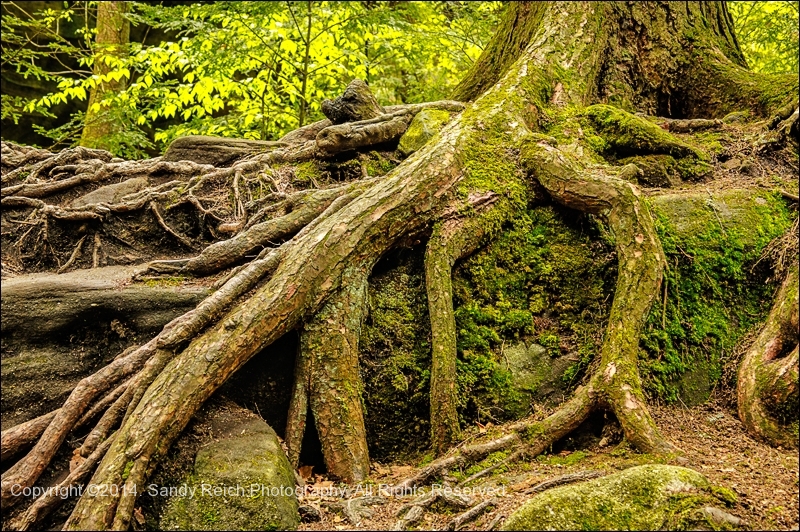
By Carla Burzyk
For those who participate in Christian worship (with traditions dating back a millennium or so), we find ourselves at almost the halfway point of Eastertide. Lent, Holy Week, and Easter Sunday are now behind us. If you’re like me, you may feel like you’ve been to hell and back.
Six weeks of Lenten sacrifices (or additional services or prayer); emotional longing at the annual reenactment of the Agape or Last Supper, followed by an emptiness felt sitting in a sanctuary with a stripped altar; fear and loss over the crucifixion of Jesus of Nazareth; desolation over the separation of humanity from Jesus; and finally, our shouts of “Alleluia!” on cue when the sanctuary comes alive at the Great Vigil celebrating the triumphant Christ.
It is a roller coaster as we jump between our relationship with the immanent and transcendent God, the human and divine Holy Spirit. We are working to figure out the “via media” of our journey of faith and finding.
If we ever can.
The Christian rites of holy week and Easter are a rich panoply of back-and-forth dualistic thinking: conviviality and isolation, horror and acceptance, separation and reunion, abject grief and unadulterated joy. Similarly, human thinking and being are an intense study in contrasts: night of the soul/ecstasy in a relationship with the Divine; barren deserts devoid of spirituality/renewing slake of God’s presence in our lives; separation that “sin” creates in our hearts/conjoined energy of life and love in our burgeoning faith and spiritual practices.
The itchy part is we are rarely lucky to live in the light very long (because we are humans with questioning minds) or doomed to spend much time in the darkness (because we’re humans with hopeful hearts).
We might better regulate the flip flops of an active mind, heart and spirit by looking at the transcendence and immanence of Spirit in our lives. How can we muddle our dualisms? It doesn’t always have to be either/or. It can and should be both, at the same time, in the same mind, soul and community.
In her most recent book, The Not-Yet God, Ilia Delio, a nun and endowed chair of theology at Villanova University, posits an idea based on quantum physics and faith (quite the combo.) She says that creation isn’t an external act of God, a “thing” on the endless edge of divinity. According to Delio, creation is deep-rooted in God’s life, specifically in its self-diffusive goodness. In other words, we are entwined in the Divine. We are as much a part of God’s life as God is integral to ours.
Delio has had a lifelong intellectual and spiritual relationship with the work of Carl Jung and Pierre Teilhard de Chardin. These men blend science and faith in a complementary way. Their work in science does not cancel out their theological work when disputes about the importance of one or the other arise.
Both men are fascinating thinkers and theologians. Delio lays out how their work changes thinking about human relationships with God. She writes that neither “pantheism” (a Oneness of all there is) nor “panentheism” (a more algebraic take that the Divine is in the world, and the world is in Divine but the Divine is not the world and, it follows, the world is not the Divine.) But both espouse the coexistence of immanence and transcendence.
Delio coins her term for the human/Divine relationship: “entanglement.” Such a prickly and messy word for a theologian and physicist! By her definition, the term refers to all phenomena’s inseparability (or non-duality). The whole is much greater but can only result from a tenuous relation between all the parts.
The relationship between the two goes beyond permeability. It’s fusion. This concept is an exciting harbinger of thought and discussion that may come forward as we approach the next 500-year paradigm shift in religion and all that the term implies. The last significant change took place around 1524. 1524, you ask? Three words: Martin. Luther. Reformation.
Will our “entanglement” with the Divine yield a turning point for how 21st-century spiritual seekers “do” God? Will the relics of a medieval accumulation of 16th-century thought carry weight for people of faith who are engineers, coders, physicists, writers, researchers, philosophers and 21st-century theologians?
Can the rest of us position ourselves to promote a shift by adopting a non-dualistic approach to administering kindness and love to our “God-others” and “God-selves”? Do we have the foresight and courage to name the still-practiced rites and rituals of the Church for what they no longer can provide in our 21st century?
In exploring these scientific/theological approaches to life, Spirit, transcendence and immanence, can we move faith seekers outside of a Church building and into becoming entangled with the Divine? We need to get comfortable with this non-duality as was present in early Church communities. These communities lived out Jesus’s original intent and message: they were inextricably bound to individual seeking, to one another, and were responsive to the world’s needs.
Instead of feeling caught between relative “heavens” and “hells,” we can strive to live and believe in a more conjoined place. A place where we can live with both extremes simultaneously for what they are and how they represent our faith journeys.
The non-dualistic space we can create may open a closer and deeper conversation with the Spirit and all that makes up the Spirit.
At least as far as we know, for now.

2 Responses
Thank you for this timely and insightful message–we must creatively remember we are creatively as much a part of God’s life as God is of ours—creation Is ongoing, we are each created and creators woven into the tapestry of Divine and human, human and Divine, there is no separation. Interesting word re-form-ma-tion–do we have the courage to change regarding ourselves and our rituals, are we open hearted enough to turn toward what is happening, let go of what must be let go of and allow that which wants to be born to emerge?
Thanks, Judy. In these times, I feel a non-dualistic approach to almost everything is necessary to keep our spiritual sanity. I’m very intrigued by the prospect of putting forward ideas of what religious/apostolic/dogmatic ideas have run out of gas for us today.